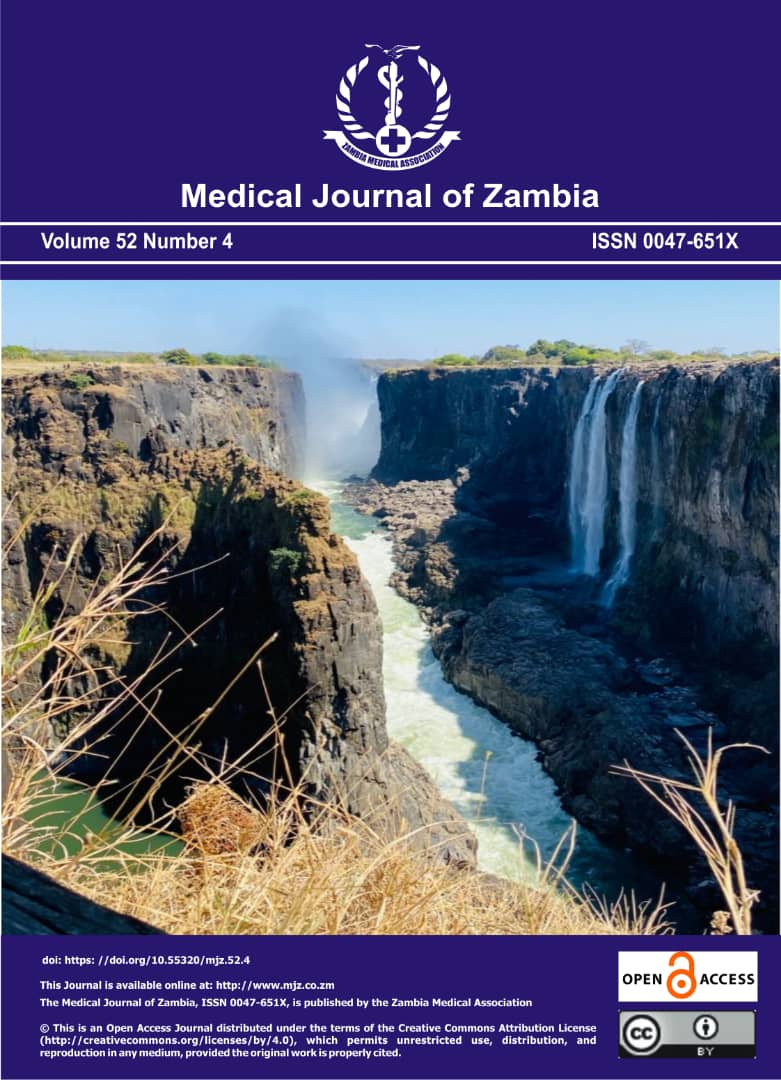Impact of Delayed Cord Clamping on Newborn Haemoglobin Levels in Vaginal Deliveries at Women and Newborn Hospital and Public First-Level Hospitals, Lusaka, Zambia.
DOI:
https://doi.org/10.55320/mjz.52.4.733Keywords:
delayed cord clamping, , early cord clamping , Neonatal anaemiaAbstract
Background: Delayed cord clamping (DCC) is a recommended practice for all births, significantly improving neonatal outcomes by increasing haemoglobin levels and reducing neonatal anaemia. It enhances iron stores through additional placental blood transfer, supporting long-term developmental benefits. Despite these advantages, only 40% of midwives and obstetricians practice DCC, falling short of WHO’s recommendation. Given its low cost and effectiveness, underutilization in Zambia is concerning. This study assessed the impact of DCC on newborn haemoglobin levels, examined associations with maternal and neonatal factors, and determined its prevalence in vaginal deliveries at selected public health facilities in Lusaka, Zambia.
Methodology: This analytical cross-sectional study included 489 mother-infant pairs at the Women and Newborn Hospital and public first-level hospitals in Lusaka. Data were collected using a structured questionnaire and medical records. Participants were categorized into DCC (cord clamping ≥1 minute) and Early Cord Clamping (ECC) (<1 minute) groups. Descriptive analysis and multivariate logistic regression evaluated DCC’s effect on neonatal haemoglobin levels and associated factors.
Results: DCC was practiced in 71.4% of cases. No significant differences were found in maternal, obstetric, or neonatal characteristics between ECC and DCC groups. Newborns in the DCC group had significantly higher haemoglobin levels. They were nearly five times more likely to have levels of 13–14.9 g/dL (AOR = 4.97, p = 0.009) or ≥15 g/dL (AOR = 4.56, p = 0.015).
Conclusion: DCC is associated with significantly higher newborn haemoglobin levels, supporting its routine implementation to improve neonatal health outcomes.
Downloads
Downloads
Published
Issue
Section
License
Copyright (c) 2025 Medical Journal of Zambia

This work is licensed under a Creative Commons Attribution-NonCommercial 4.0 International License.









